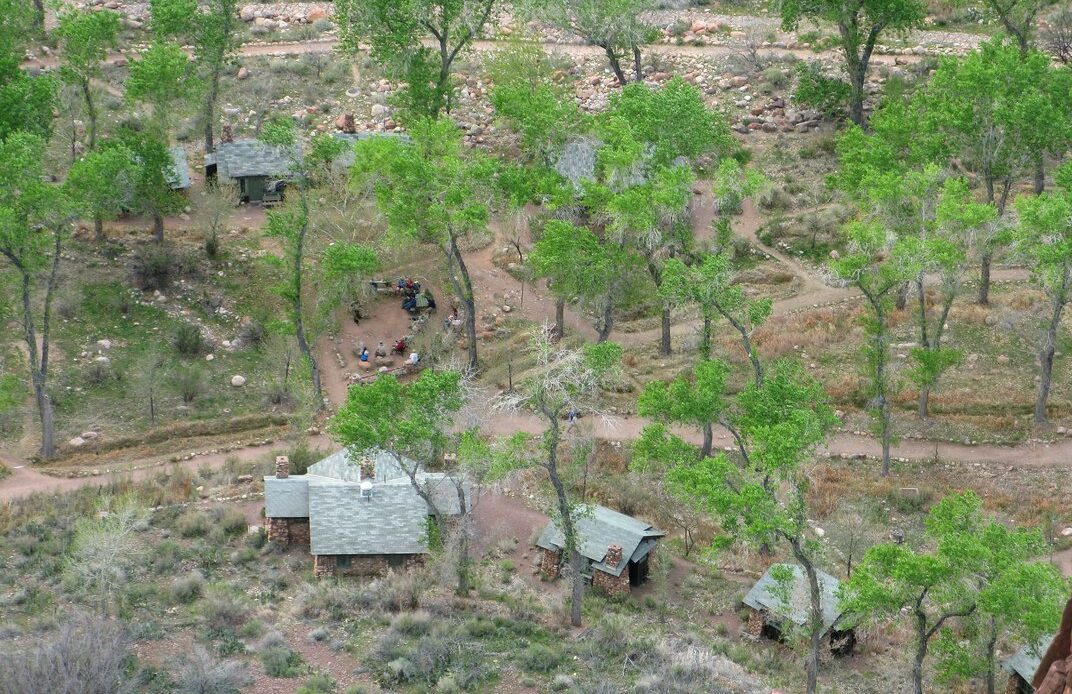A labyrinth of trails branches miles and miles out from the bustling, tourist-packed South Rim of the Grand Canyon.
The hike down the South Kaibab Trail is intense: seven-and-a-half miles of sunbaked switchbacks and thousands of feet of elevation change, past endless prickly pear and alien blooms of agave. After five hours of descent, calves wobbling and fortitude waning, you cross a foot bridge spanning the Colorado River and round a final corner, and there it is, against all odds: Phantom Ranch.
Currently celebrating its centennial, Grand Canyon’s Phantom Ranch is considered one of the world’s most exclusive accommodations, requiring a win in a lottery system more than a year in advance to nab a reservation. Accessible only by foot, mule or raft, it is secluded, and, like the canyon that cradles it, it’s a place frozen in time. Cell phones don’t work. There is no internet. Instead, people sit around and swap tales over stew from the canteen while mule deer graze mere feet away. Once the day hikers depart, you’re left in solitude, silence and perpetual stars, a feeling that is at once jarring and wondrous.
An aerial view of Phantom Ranch
Designed to channel a dude ranch, the site consists of a handful of cabins and dorms situated around a canteen that’s home to the ranch’s kitchen and dining hall. But in those modest buildings is an aesthetic that would help define the look of nearly all the historic buildings at the park, from the Bright Angel Lodge to the Desert View Watchtower and beyond—and others around the country dating to the National Park system’s formative years.
Even today, Phantom Ranch, nearly one vertical mile below the canyon’s rim, is a marvel—a fact that only underscores its improbable construction a century ago.
Which raises the question: Why was it built here in the first place?
Bringing tourists to the Grand Canyon
The Grand Canyon, a place that appears devoid of human life from the rim, has long brimmed with it. The Ancestral Puebloan, Cohonina, Havasupai, Zuni, Navajo and other Native American tribes traversed the inner canyon for thousands of years before European explorers arrived. Beginning in the late 1800s, a wave of prospectors began descending into the canyon in search of copper, asbestos and other ore.
“These places were all open for exploitation,” says…
Click Here to Read the Full Original Article at Travel | smithsonianmag.com…
